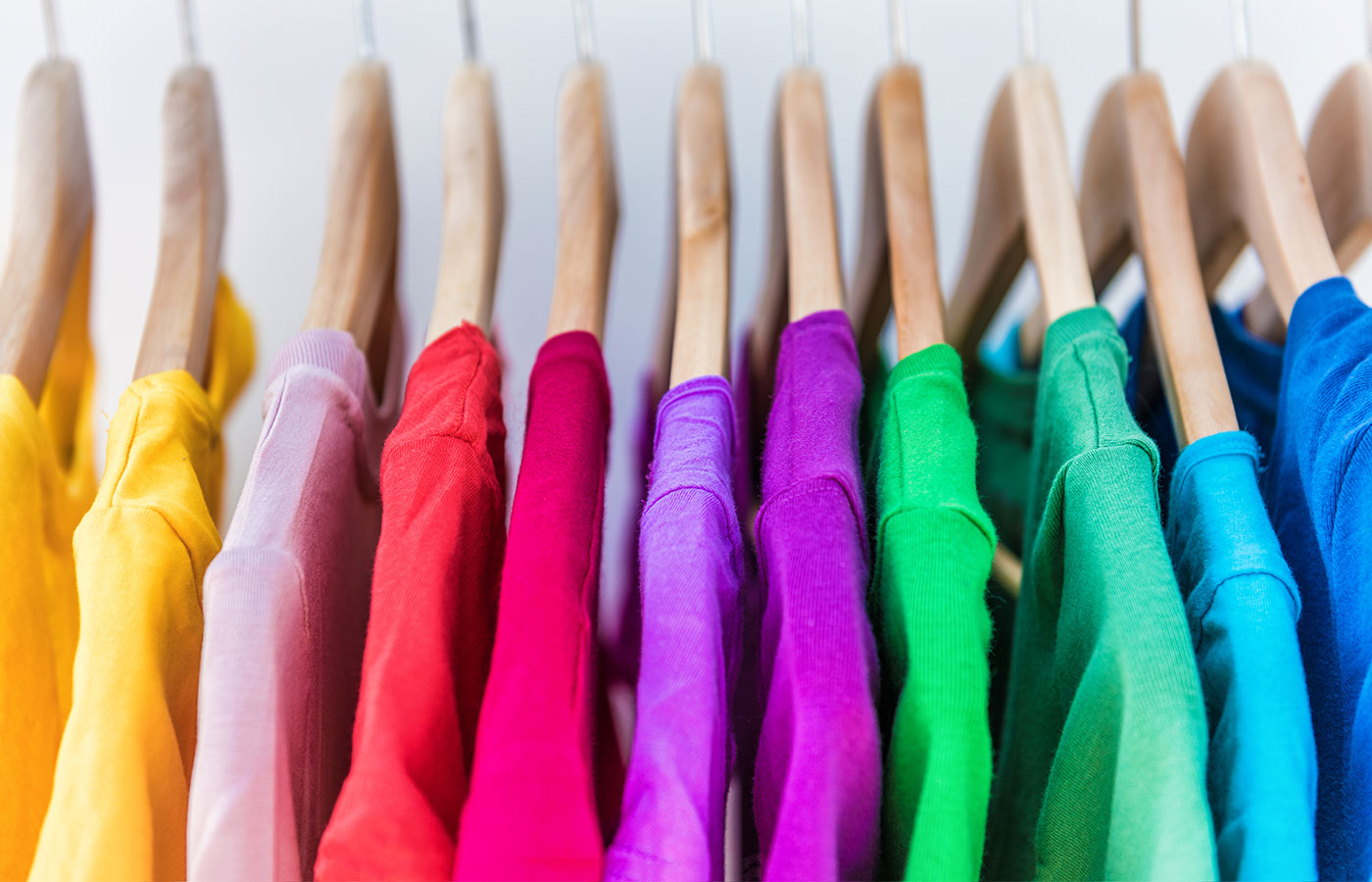Comprehending Clothing: The Value of Fabric Options in Your Wardrobe
The selection of fabric in garments plays an essential duty in both visual appeals and capability. Different materials offer varying levels of longevity, convenience, and breathability, directly affecting the user's experience. Comprehending these nuances can enhance one's wardrobe significantly. Yet, numerous overlook just how these selections can impact not just personal design, but also sustainability. What material decisions could redefine your closet and straighten it with both design and duty?
The Role of Fabric in Fashion and Performance

Common Textile Kinds and Their Qualities
When picking clothes, comprehending the features of typical material kinds is important for making informed choices. Cotton, a widely-used all-natural fiber, is recognized for its soft qualities, adaptability, and breathability, making it ideal for sportswear and day-to-day garments. Bed linen, another all-natural option, flaunts superb moisture-wicking properties and a distinct appearance, ideal for cozy climates.Wool, frequently favored for its heat and resilience, differs in fineness; merino woollen is soft against the skin, while coarser kinds are used for outerwear. Synthetic materials like polyester and nylon offer resilience and resistance to wrinkles, making them preferred for activewear and travel garments. Blends, which incorporate artificial and all-natural fibers, can boost functionality while keeping comfort. By identifying these textile features, individuals can select clothes that straightens with their lifestyle and visual choices.
Breathability and Comfort: Picking the Right Fabrics for Various Climates
Choosing the right textiles for various climates can significantly boost comfort and total wearability. Breathable materials are vital in warm environments, as they enable air circulation and moisture evaporation. Fabrics such as cotton, linen, and moisture-wicking synthetics efficiently attract sweat away from the body, keeping the user cool and completely dry. Conversely, in cooler climates, thicker textiles like wool or fleece give insulation while maintaining breathability, ensuring heat without overheating.Additionally, the option of textile weight plays an essential function; lightweight textiles are more effective for summer, whereas much heavier options are fit for winter wear. Understanding the special buildings of each material allows people to dress properly for differing weather. Ultimately, selecting breathable and comfortable materials customized to details environments can considerably boost day-to-day comfort and enhance the total experience of using garments.
Durability and Care: How Textile Impacts Durability of Your Wardrobe
Selecting the ideal products can substantially affect the sturdiness and treatment demands of a wardrobe. Fabrics such as cotton and polyester are understood for their strength and convenience of maintenance, making them optimal for everyday wear. In comparison, delicate products like silk and lace call for more cautious handling and specialized cleaning methods, which can enhance the moment and effort needed for care. Branded Clothing.Durability is likewise affected by the material's weave and surface; firmly woven materials tend to resist deterioration better than loosely woven alternatives. Furthermore, artificial blends typically supply improved toughness, combining the very best qualities of multiple fibers.Understanding the care guidelines for each and every material is crucial, as incorrect drying or cleaning can lead to early wear. Inevitably, selecting resilient products can result in a longer-lasting wardrobe, decreasing the regularity of replacements and adding to a more sustainable style option
The Impact of Material on Fit and Shape

Lasting Material Choices: Making Eco-Friendly Choices
The influence of textile prolongs beyond fit and shape to incorporate ecological elements, motivating a growing rate of interest in sustainable textile options. Environment-friendly materials, such as natural cotton, hemp, and Tencel, are getting traction among customers who prioritize sustainability in their closets. These materials are often created with less chemicals and water, lowering their environmental footprint.Additionally, recycled materials, made from post-consumer waste, provide a cutting-edge remedy to the textile industry's pollution issue. Brands increasingly embrace transparency in their sourcing approaches, allowing customers to make enlightened choices about their purchases.Choosing lasting fabrics not just supports honest techniques but additionally urges the style industry to embrace more accountable manufacturing techniques. As recognition of environmental issues climbs, people are urged to review the long-term impact of their material options, fostering a motion in the direction of a more lasting and environmentally aware method to fashion.
Boosting Style: Just How Textile Can Transform a Clothing
While many may concentrate on color and cut when selecting an attire, the option of textile plays an essential role in boosting design and enhancing general look. Various products convey distinct moods and messages; for example, silk exhibits high-end and sophistication, while jeans provides a laid-back, relaxed ambiance. The structure and drape official site of a textile can drastically modify the silhouette, with organized textiles offering a refined appearance and softer ones producing a more fluid, kicked back aesthetic.Moreover, the weight of the textile affects wearability throughout periods. Light-weight textiles like bed linen and cotton are perfect for summertime, while larger products such as wool and velour provide warmth and sophistication in colder months. Comprehending material buildings, such as breathability and stretch, also empowers people to make enlightened choices that improve comfort without jeopardizing design. Eventually, the appropriate material can change an outfit from common to phenomenal, making it a crucial factor to consider in any type of closet.
Often Asked Questions
Exactly how Do I Identify the Fabric Web Content of My Garments?
To determine material material, one can take a look at care labels, conduct shed examinations for fiber identification, or consult material swatches. These techniques help differentiate materials, guaranteeing notified choices for apparel treatment and upkeep in daily wear.
Can Textile Choice Affect My Mood or Confidence?
Material selection can considerably impact a person's mood and self-confidence. Branded Clothing. Specific products may stimulate feelings of convenience or sophistication, while others can really feel uncomplimentary or restrictive, ultimately affecting self-perception and psychological health throughout the day
What Fabrics Are Finest for Delicate Skin?
For people with sensitive skin, natural materials like cotton, linen, and bamboo are commonly suggested. These products are breathable, hypoallergenic, and much less most likely to cause irritability, making them appropriate choices for comfort and skin wellness.
How Do I Effectively Laundry and Take Care Of Different Fabrics?
To properly care and wash for different fabrics, one need to consider each material's specific needs, consisting of temperature setups, cleaning agents, and drying helpful hints out techniques, ensuring long life and maintaining the fabric's original top qualities for perfect use.
Are There Particular Fabrics for Athletic or Performance Wear?
Athletic or performance wear often utilizes fabrics such as polyester, spandex, and nylon. These products are developed for moisture-wicking, breathability, and versatility, boosting activity and convenience during physical tasks while giving toughness and support. Conversely, in colder environments, thicker textiles like woollen or fleece give insulation while maintaining breathability, making sure warmth without overheating.Additionally, the choice of fabric weight plays a vital duty; lightweight textiles are more suitable for summer season, whereas heavier options are matched for winter season wear. In comparison, delicate materials like silk and shoelace need even more careful handling and specialized cleaning techniques, which can enhance the time and effort needed for care.Durability is likewise influenced by the fabric's weave and coating; firmly woven textiles often tend to withstand wear and tear much better than loosely woven options. In comparison, rigid textiles can restrict movement yet give a timeless, polished look.Moreover, the thickness and structure of the textile can affect the visual understanding of body shape. The effect of textile prolongs beyond fit and shape to include environmental aspects, motivating a growing rate of interest in lasting her latest blog fabric selections. The texture and drape of a fabric can substantially modify the shape, with structured textiles providing a polished look and softer ones developing a more fluid, unwinded aesthetic.Moreover, the weight of the fabric influences wearability across seasons.